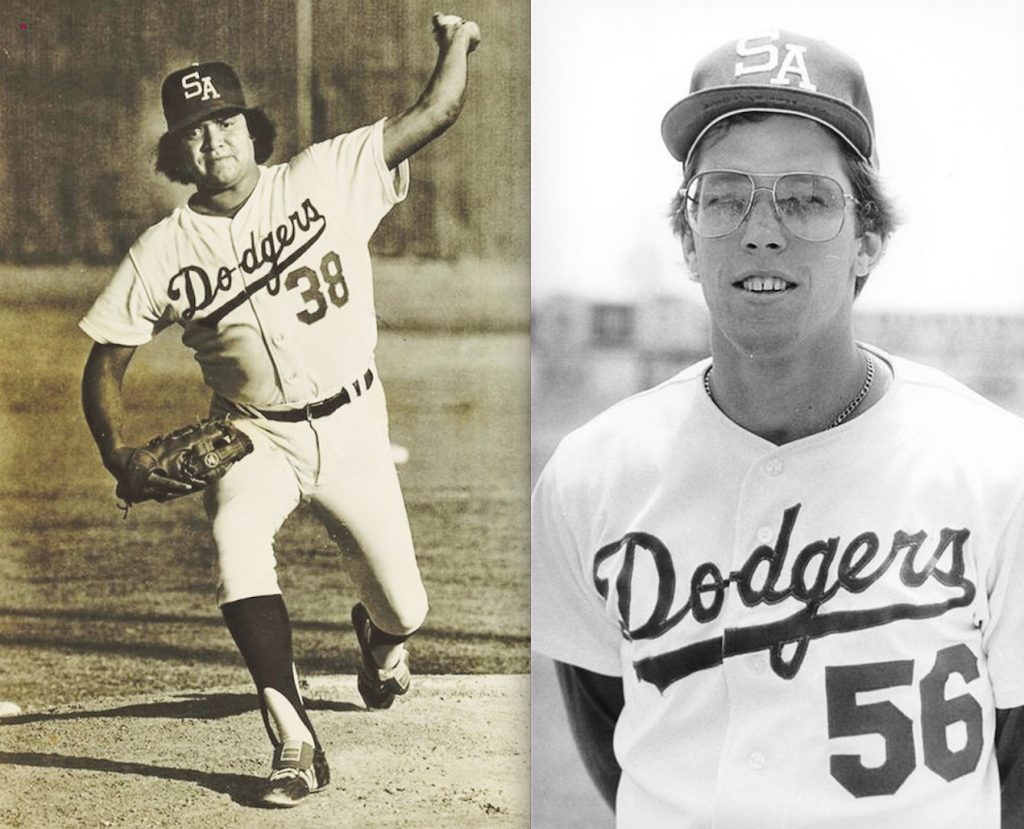Back before I settled on the idea of writing Brothers in Arms: Koufax, Kershaw, and the Dodgers’ Extraordinary Pitching Tradition (pre-order now!), I was toying with doing a biography on a single Dodger pitcher. And among my first choices were the two men who end up appearing together in “Part Five: El Toro and the Bulldog” … Fernando Valenzuela and Orel Hershiser.
Brief boxes in Part Five on other noteworthy Dodger pitchers
• Tim Belcher
They are the iconic hurlers for the Dodgers from the 1980s, bridging the gap in Dodger pitching history between Hall of Fame righty Don Sutton and future Hall of Fame lefty Clayton Kershaw. On top of that, Valenzuela and Hershiser have more in common than people might realize. Though they came from different backgrounds, their journeys to Dodger Stadium each score high in improbability.
Teammates at Double-A San Antonio in 1979, they reached the majors three years apart, Valenzuela in 1980, Hershiser in 1983, though Hershiser told me he knew he shouldn’t worry about how fast Valenzuela was developing.
“I never felt like I was competing with Fernando. I thought, ‘Wow, what a talented guy with this great ability to locate the ball inside and out, with his ability to throw the screwball that Bobby Castillo taught him, with his ability to throw a breaking ball. Tremendous poise, tremendous location, tremendous movement.’ But I never felt like I could beat Fernando, because he’s left-handed and he’s got a screwball.
“What I started to really realize was that there’s just so many different ways to skin a cat. Some guys are going to have high velocity. Some guys are going to have great movement. Some guys are going to have borderline control, and some guys are going to have precise control. Some guys can change speeds, and some guys can go up the ladder with their velocity from 92 all the way up to 97 [mph]. And you’ve just got to figure out, with all those different formulas or all those different ways to get people out, which one are you? Which one can you do at a high level?”
Valenzuela’s chapter, of course, revisits the glory of his supersonic arrival in Los Angeles, as well as his enduring legacy. In pursuit of trying to convey what it was like to be inside that maelstrom, I spoke not only with Valenzuela but several who were in his orbit, including his primary catcher, Mike Scioscia.
“In hindsight, you get some room in your rearview mirror and you kind of get some perspective,” Scioscia says. “And looking back, it was unbelievable how all the stars aligned, that this young superstar pitcher from Mexico is pitching in L.A. And the immense amount of pressure that possibly could have built on his success as he pitched shutout after shutout—he was just marvelous that year—diffused because he was just a kid playing baseball. That’s what he felt.”
The two men are jewels in the Dodger pitching tradition, and I hope you find their pages inside Brothers in Arms sparkle.
Previously:
- ***NEW BOOK ALERT***: Brothers in Arms: Koufax, Kershaw, and the Dodgers’ Extraordinary Pitching Tradition
- Prologue: Dazzy Vance and the days before the Dodgers pitching tradition began
- Part One: The Kings of Brooklyn
- Part Two: The Two Emperors
- Part Three: The Post-Koufax Generation
- Part Four: The Modern Classicists





Comments are closed.